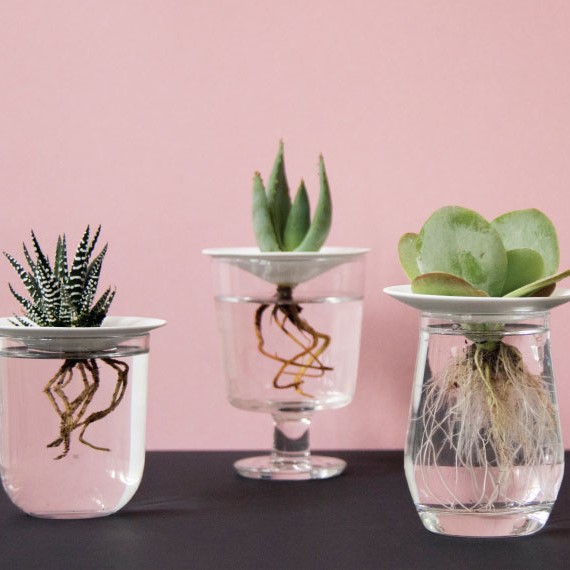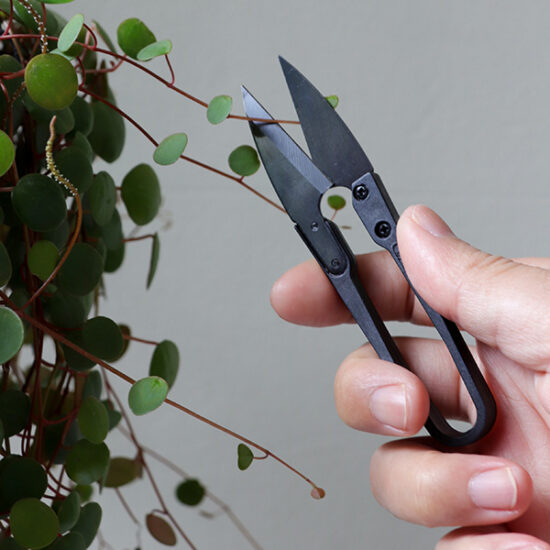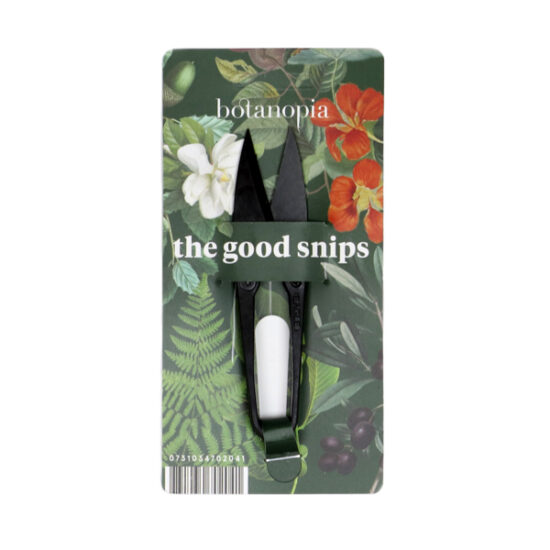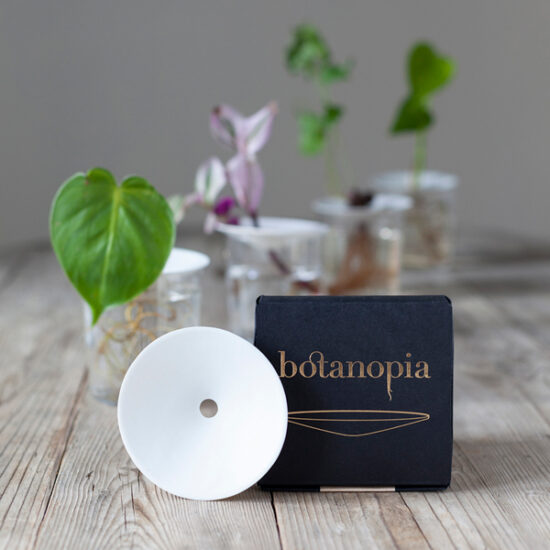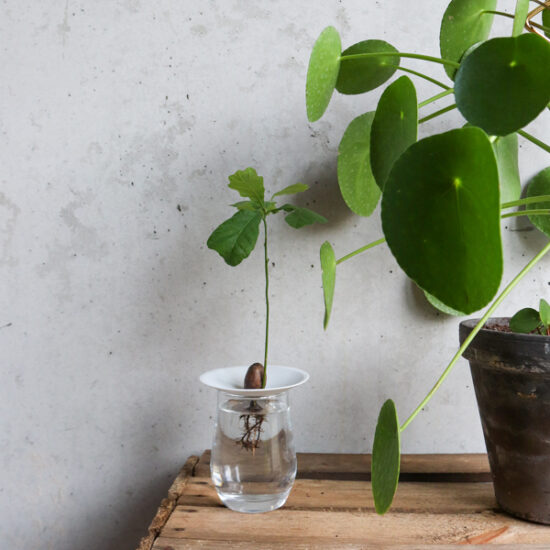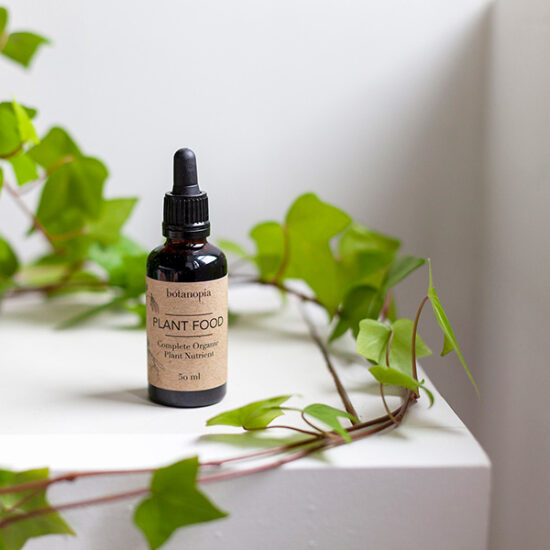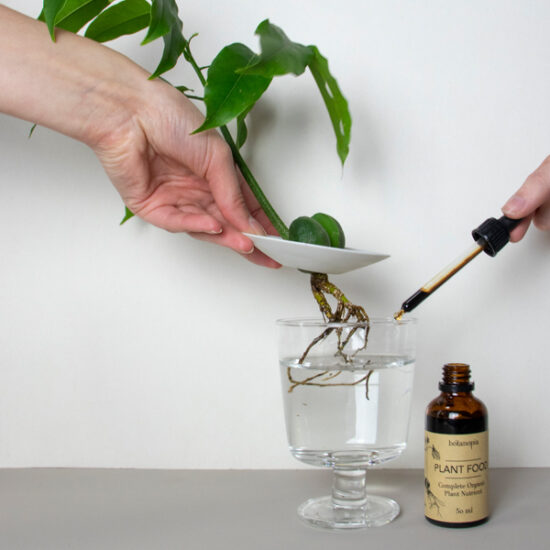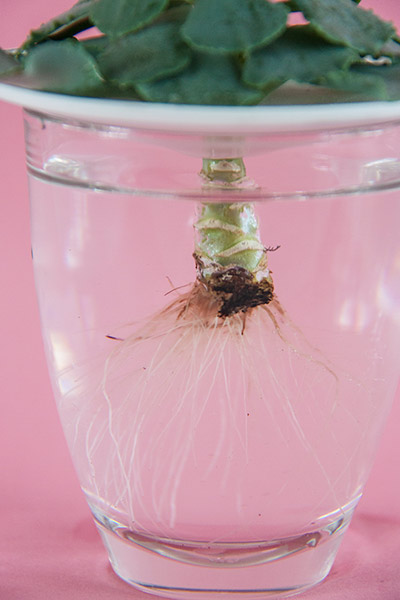Do you really need rooting hormone for your plant cuttings?
You might have heard about the term “rooting hormone” before, but you’re not sure what it is, or if you need it.
It’s used to stimulate the formation of new roots on your plant cuttings. Let’s explain:
Rooting hormones, what’s that?
Just like humans, plants secrete hormones that control all kinds of processes. They help to regulate or stimulate the growth of roots, or the growth of new stems/branches.
Those phytohormones (= plant hormones) are naturally present in plants. But they can also be produced synthetically. An exact replica of the natural hormone molecule is then recreated in a lab.
You can buy those commercially, in powder or gel form. You then use these hormones locally on the part of the cutting where you want the new roots to form. Most often you dip the stem of your cutting in the powder or gel. You can then place your cutting in water (or in soil) to root.
The benefit of using synthetic hormones is that your cuttings will develop roots faster and more reliably. Your cuttings can then absorb water and nutrients through those new roots to grow further.
What about “natural” alternatives? I’ve heard of cinnamon and honey, does that work?
Honey does not contain rooting hormones in a significant concentration, so it won’t help your cuttings to create roots. It does have antifungal properties, so it may help reduce fungal infections. If you take cuttings from a healthy plant, you shouldn’t really have issues with fungi on your cuttings though.
Similarly, cinnamon also does not contain any rooting hormones. Cinnamon has some antimicrobial properties so it might help prevent bacterial growth that could harm your cutting. But it will not help your cuttings to create roots.
There are many more such recipes floating around on the internet, that involve Aloe, or coconut water, or willow bark concoctions. There is no scientific proof that these reliably help your cuttings to root. For example, even if willow bark does contain rooting hormones, it’s difficult to extract it yourself into a liquid that will be concentrated enough.
I don’t have any rooting hormone, what should I do?
There are many plants that will root easily in water, without additional rooting hormone. If you don’t have any commercially available (synthetic) rooting hormone, simply try rooting your cuttings without it. Focus on creating the ideal rooting conditions for your plant as we outline below.
You may also try to pair several cuttings in one glass. There isn’t significant research available to back this up, but the theory makes sense. You pair a plant that roots very easily, such as a spider plant, with other cuttings. The spider plant will release its naturally available rooting hormone in the water, which will then be available for the other cuttings in the same glass. We have not tested it, but feel free to report your findings if you do!
If you want to root more precious cuttings, or more difficult species, then invest in a synthetic rooting hormone. They last for many years and are fairly inexpensive to buy, so they will be well worth the money. We don’t recommend that you experiment with homemade recipes that either just don’t work, or won’t make a significant difference to your cuttings.
Everything you need to grow your cuttings in water:
-
Sale! Original price was: 4,74CHF.3,95CHFCurrent price is: 3,95CHF.
What can I do to make sure my cuttings will root successfully in water?
The main success factors to win the “Root Before Rot” race:
- Work clean. Disinfect your cutting equipment and use a clean container to root your cuttings in.
- Your cutting will need adequate light and temperature. That’s why it’s usually not ideal to take cuttings in the winter when there are less hours of daylight available. Keep your cuttings in your brightest available spot. You can also supplement with a grow light if you don’t have adequate light. There’s still a possibility that your cuttings will root in a darker spot, it will just take (a lot) longer and have more risks of failure.
Don’t underestimate temperature either, most cuttings root dramatically faster if you keep them around 24°C to 26°C. - Keep the container small. The plant naturally creates its own hormones to stimulate the growth of roots. If you use a large container, they get very dilute in the water. Use a narrow glass or bottle, so you need less water to fill it with. When the water level goes down, top it up (instead of completely refreshing the water), to preserve the hormones present in the water.
- Make sure the leaves of your cuttings stay dry and above the water. If the leaves are submerged, they’re much more likely to rot. Consider using a germination plate which will achieve this goal perfectly. It also keeps the water from evaporating too fast.
- Oxygen. The roots greatly benefit from available oxygen. To speed things up, you can try to use a small aquarium pump to constantly add oxygen to the water your cuttings are growing in.


